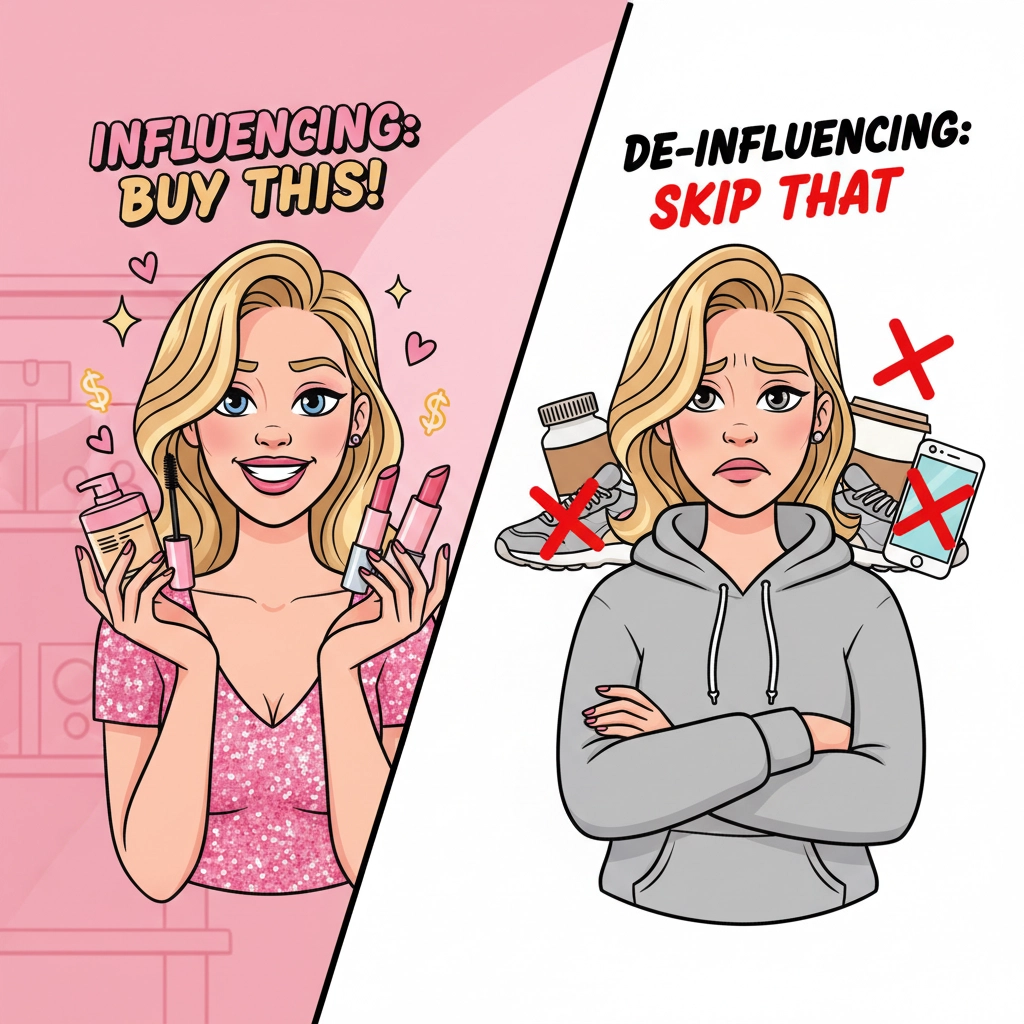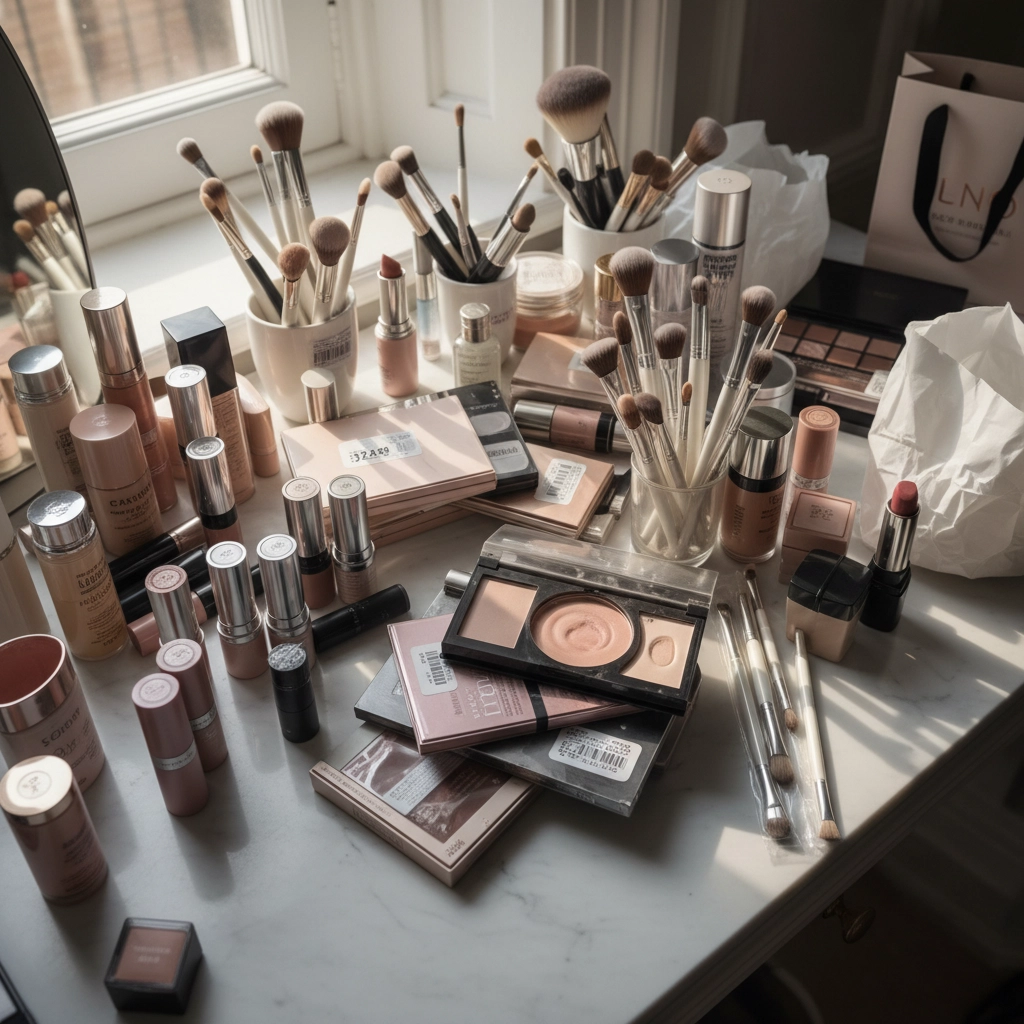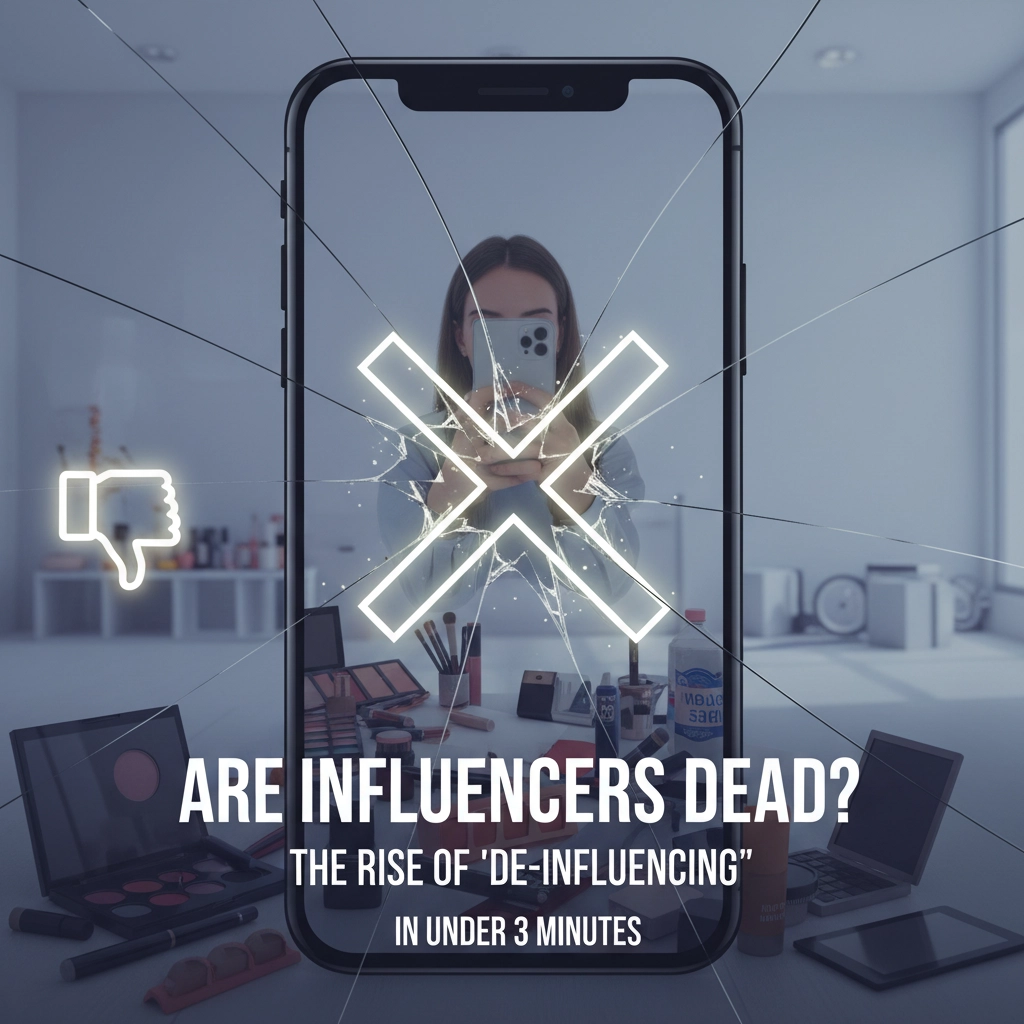Remember when everyone was buying that $68 Charlotte Tilbury lipstick because every beauty influencer swore it was "life-changing"? Yeah, well, plot twist, it turns out half of them never even used it regularly. Welcome to the era of de-influencing, where creators are finally telling you what not to buy.
But here's the million-dollar question everyone's asking: Does this mean influencers are officially dead? Spoiler alert: absolutely not. In fact, the industry is projected to hit $32.55 billion by 2025, and 82.7% of US marketers are still using influencer campaigns. So what's really going on here?
What Exactly Is De-Influencing?
De-influencing started as a rebellion on TikTok in early 2023. Instead of the usual "OMG you NEED this product" content, creators began making videos titled "Don't buy this" or "Why I regret this purchase." The hashtag #deinfluencing exploded to 1.3 billion views by January 2024, with over 248 million related videos flooding the platform.

Think of it as the anti-haul movement. De-influencers break down why that viral Stanley cup isn't worth $45, or why you probably don't need another Rare Beauty blush when you already own five similar shades. They're basically doing what your financially responsible friend would do, talk you out of impulse purchases.
The movement gained serious traction because people were getting fed up. Only 12% of consumers actually buy what influencers endorse, and here's the kicker, 42% of those who did make purchases ended up regretting them. That's a pretty damning statistic for an industry built on recommendations.
Why Traditional Influencer Marketing Hit a Wall
Let's be real for a second. Scroll through Instagram or TikTok for five minutes and you'll see the same sponsored posts over and over. "Use my code for 20% off!" became as common as saying "good morning." Audiences got smart, and they got tired.
Here's what went wrong with traditional influencing:
• Oversaturation: When literally everyone is an influencer, nobody feels special anymore
• Fake authenticity: Scripted "candid" moments felt increasingly obvious
• Product overload: Viewers couldn't keep track of which products creators actually used versus what they were paid to promote
• Trust issues: Too many influencers promoted products they clearly didn't believe in
• Economic pressure: With inflation and financial stress, people became more selective about spending

Sarah, a 28-year-old marketing manager from Chicago, put it perfectly: "I realized I had a drawer full of skincare products I bought because of TikTok, and I wasn't even using half of them. When I added up what I spent, it was over $400 in six months. That's when I started following de-influencers instead."
The Real Impact: Evolution, Not Extinction
Here's where it gets interesting, de-influencing isn't killing the influencer industry. It's actually making it better. The brands and creators who are thriving right now are the ones who adapted to this shift toward authenticity.
Smart influencers started incorporating de-influencing tactics into their regular content. They'll review a product honestly, mention its flaws, compare it to cheaper alternatives, and only recommend it if it's genuinely worth the money. This approach builds way more trust than the old "everything is amazing" strategy.

The numbers back this up. Despite the de-influencing trend, 75.6% of brands still plan to dedicate budget to influencer marketing in 2025. Why? Because when done right, it still works better than traditional advertising. The key difference is that successful campaigns now focus on genuine value rather than pure promotion.
What This Means for the Future of Social Media Marketing
The influencer landscape is splitting into two camps: those who embrace transparency and those who don't. Guess which group is winning?
Creators who openly discuss product failures, share unflattering photos, and admit when something didn't work for them are building stronger, more loyal audiences. Brands are catching on too, they're working with influencers who have built reputations for honest reviews, even if those reviews aren't always positive.

This shift is also creating new opportunities. "De-influencers" are becoming influencers in their own right, building massive followings by being the voice of reason in a sea of sponsored content. Some have even partnered with brands specifically to create "honest review" content, where they're given products with zero pressure to promote them positively.
The beauty industry, in particular, is seeing this change. Audiences now favor creators who show products in natural lighting, discuss undertones honestly, and explain why certain products might not work for everyone. It's less glamorous than the old Instagram aesthetic, but it's infinitely more helpful.
The Authenticity Economy Is Here to Stay
What we're witnessing isn't the death of influencer marketing, it's the birth of the authenticity economy. Consumers are craving real connections and honest opinions in a digital world that often feels fake and manufactured.
This doesn't mean every influencer needs to become a de-influencer. It means the successful ones need to strike a balance between promotion and genuine helpfulness. The creators who survive and thrive will be those who view their audience as friends they want to help, not customers they want to convert.
Smart brands are already adapting. They're giving influencers more creative freedom, allowing negative reviews in exchange for authentic content, and focusing on long-term relationships rather than one-off promotional posts.
So, are influencers dead? Not even close. But the lazy, inauthentic version of influencing? Yeah, that's definitely on life support. And honestly, that's probably a good thing for everyone: creators, brands, and consumers alike.
What do you think: have you found yourself being more skeptical of influencer recommendations lately, or are you still influenced by your favorite creators?







